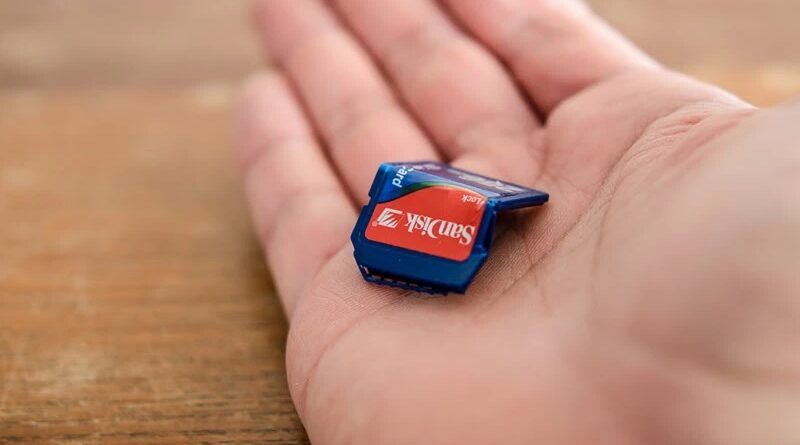Effective Methods for Recovering Data from a Damaged SD Card
In the digital age, SD cards are ubiquitous, used in devices ranging from smartphones to digital cameras. However, these handy storage devices can become corrupted, leading to potential data loss. Whether it’s due to physical damage, file system corruption, or accidental formatting, losing precious data can be a frustrating experience.
Fortunately, there are several methods to recover data from a corrupted SD card. This guide will walk you through various effective techniques for SD card data recovery and highlight the importance of professional data recovery services.
Understanding SD Card Corruption
Before diving into recovery methods, it’s crucial to understand what causes SD card corruption. Common reasons include:
- Physical Damage: Exposure to water, extreme temperatures, or physical shocks can damage the SD card’s internal components.
- Improper Ejection: Removing the SD card without safely ejecting it can lead to file system errors.
- File System Corruption: Corruption can occur due to software issues, power outages during data transfer, or malware attacks.
- Wear and Tear: Over time, the NAND memory cells in SD cards wear out, leading to data errors and corruption.
Identifying the cause of corruption can help in choosing the right recovery method.
DIY Data Recovery Methods
1. Check the Card Reader and Connections
Sometimes, the issue might not be with the SD card itself but with the card reader or connection. Try using a different card reader or connecting the SD card to another device to rule out these possibilities.
2. Assign a New Drive Letter
If your SD card is recognized by your computer but not accessible, assigning a new drive letter might resolve the issue. Here’s how to do it:
- Open the Disk Management tool by right-clicking on This PC or My Computer and selecting Manage.
- In the Disk Management window, find your SD card, right-click on it, and select Change Drive Letter and Paths.
- Click Change and select a new drive letter from the dropdown menu.
- Click OK and then Yes to confirm.
3. Use CHKDSK Command
The CHKDSK (Check Disk) command is a built-in Windows utility that can fix file system errors and recover readable information. To use CHKDSK:
- Insert the SD card into your computer.
- Open Command Prompt as an administrator.
- Type chkdsk [drive letter]: /f and press Enter (replace [drive letter] with the letter assigned to your SD card).
- Follow the prompts to allow CHKDSK to fix any detected errors.
4. Data Recovery Software
There are several data recovery software options available that can help you recover data from a corrupted SD card. One popular choice is EaseUS Data Recovery Wizard. Here’s a general guide on how to use data recovery software:
- Download and install the data recovery software on your computer.
- Insert the corrupted SD card and launch the software.
- Select the SD card from the list of available drives.
- Click on Scan to start searching for recoverable files.
- Once the scan is complete, preview and select the files you want to recover.
- Click on Recover and save the files to a different location (not on the SD card).
Professional Data Recovery Services
If DIY methods fail or if your SD card has suffered severe physical damage, it may be time to consider professional data recovery services. These services have specialized equipment and expertise to handle complex data recovery scenarios.
When to Use Data Recovery Services
- Physical Damage: If your SD card is physically damaged, do not attempt to recover data yourself as it can cause further damage. Instead, seek professional help.
- Critical Data: If the data on the SD card is of high importance, it’s better to trust professionals who can maximize the chances of successful recovery.
- DIY Failure: If all DIY methods fail to recover the data, professional services are your best bet.
How to Choose a Data Recovery Service
When choosing a data recovery service, consider the following factors:
- Reputation: Look for services with positive reviews and a good track record.
- Expertise: Ensure the service has experience with SD card recovery.
- Success Rate: Inquire about their success rate for similar cases.
- Cost: Get a quote and compare it with other services to ensure it’s reasonable.
- Turnaround Time: Check how long it will take to recover your data.
Preventing Future Data Loss
While it’s good to know how to recover data, preventing data loss in the first place is even better. Here are some tips to protect your SD cards:
- Backup Regularly: Regularly back up your data to another storage device or cloud service.
- Handle with Care: Avoid exposing your SD cards to physical shocks, water, or extreme temperatures.
- Use Safe Ejection: Always safely eject your SD card before removing it from the device.
- Keep Your Devices Updated: Ensure your devices and software are up to date to minimize the risk of corruption due to software issues.
- Use Reliable SD Cards: Invest in high-quality, reliable SD cards from reputable manufacturers.
Conclusion
Recovering data from a corrupted SD card can be a daunting task, but with the right tools and methods, it’s often possible to retrieve your valuable files. Start with basic troubleshooting, move on to using data recovery software, and if needed, don’t hesitate to seek professional data recovery services. By understanding the causes of SD card corruption and taking preventive measures, you can protect your data and minimize the risk of future loss. Remember, the key to successful data recovery is acting promptly and choosing the right approach based on the severity of the corruption.

